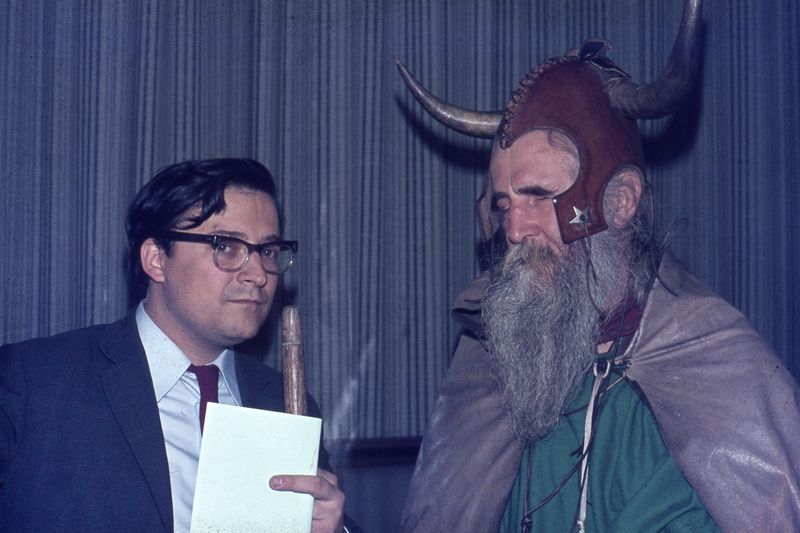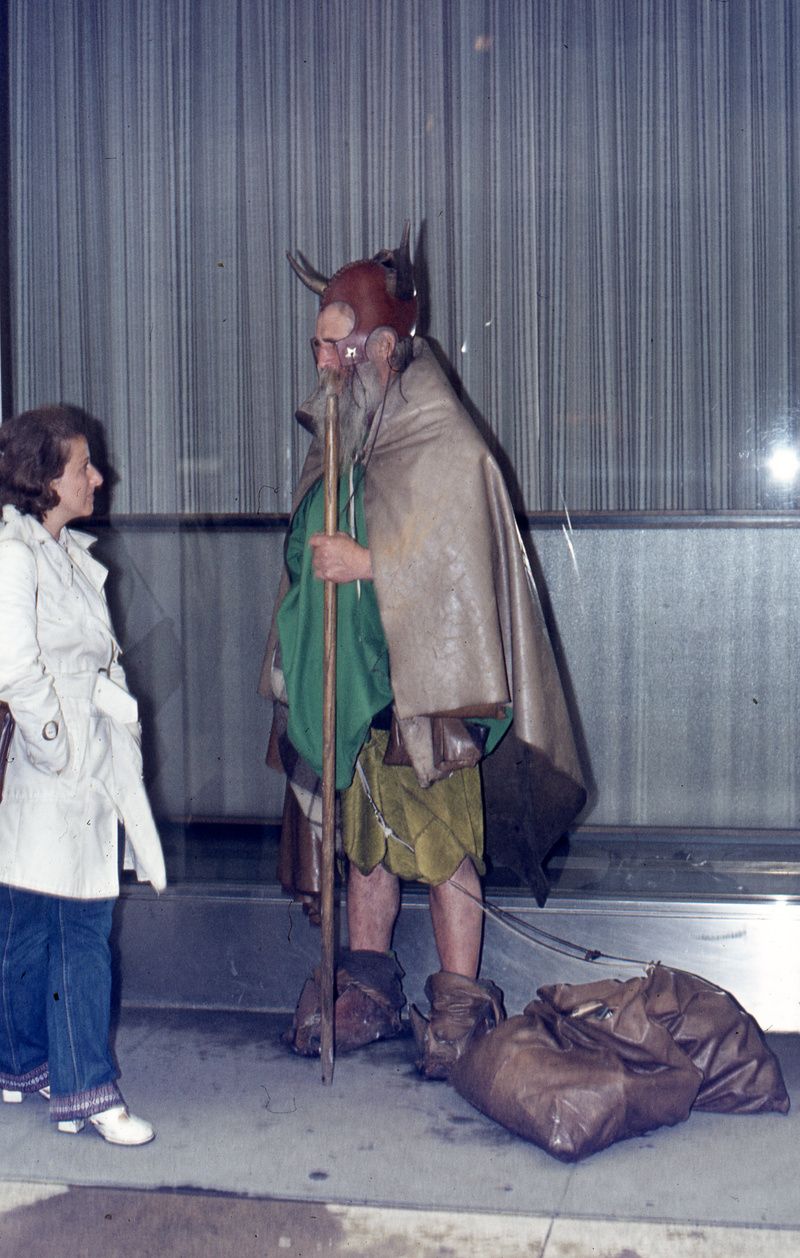Last Chance to Catch NYC's Holiday Notalgia Train
We met the voices of the NYC subway on our nostalgia ride this weekend!


Moondog moved to the beat of his own homemade drum. Born Louis Hardin in the state of Kansas in 1916, Moondog was a fixture of two different worlds in New York City. He was both a respected musician who worked with big names in genres ranging from classical to jazz to rock music, as well as an enigmatic street performer. From the 1940s through the early 1970s, countless New Yorkers walked by and stopped to interact with Moondog as he stood like a sentry on 6th Avenue dressed in Viking garb.

Hardin’s fascination with music started at a young age. A short biography by the record company ROOF states that Hardin started playing drums on a cardboard box at the age of five. Visits to local Native American reservations with his father, where he witnessed ceremonies like the Arapaho Sun Dance, further developed his passion for percussion.
Blinded by an accident at the age of 17, Hardin wrote all of his music in braille. His musical skills were mostly self-taught, but he did study string instruments and music composition at the Iowa School for the Blind. Hardin eventually made the move to New York City in 1943 to try and break into the classical music scene as a composer.
He settled in a tiny apartment in Midtown and made some money modeling for art classes, according to Dr. Robert Scotto in Moondog, The Viking Of 6th Avenue, The Authorized Biography. In his first few years in New York City, he developed relationships with musicians and the conductor of the New York Philharmonic, Artur Rodzinski. Rodzinski let him attend rehearsals, gave him clothes, and promised to conduct one of his symphonies if he ever wrote one. In 1947, after a few years in New York City, Hardin made the decision to travel out west. It was a time of change that brought about his new name, Moondog, inspired by a beloved pet who used to howl at the moon.

After his sojourn out west, where he met Duke Ellington in Los Angeles and took in the sounds of various Native American tribes, he returned to New York in 1949. This time around, Moondog took a less traditional route to break into the music business. He committed to living and playing music on the streets of New York City full-time. By bringing his music out onto the streets, he attracted attention and opportunity, and he did it on his own terms.
“The inclusion of everyday sounds was a natural part of his music in New York, as he lived on the streets. This idiosyncratic style, which he maintained throughout his life, is what makes him so exceptional musically,” says Wolfgang Gnida, who runs the Moondog archive. Moondog’s unique sound can also be attributed to his own handmade instruments, including the trimba. A trimba was a triangular drum made of mule or goat skin stretched over mahogany. When arranged in a set, he called them “dragon’s teeth.”
“Of course, Moondog’s appearance as a Viking of 6th Avenue contributed a lot to his notoriety,” Gnida continues, “His unusual outfit, his self-made instruments, the unusual rhythms as well as his verses made him famous in New York in the 50s and 60s.” Moondog regularly posted up on 6th Avenue around 53rd and 54th Streets, near the CBS building. While many New Yorkers who walked by him likely never thought twice about the eccentric man with the long beard and horned hat and the strange sounds he emitted, Moondog’s musical career was flourishing.

“His compositions were recognized by classical musicians as well as jazz musicians. However, he never allowed himself to be sorted into a particular type of music,” Wolfgang says. He recorded albums for major record labels like CBS, Epic, and the jazz label Prestige, had a song covered by Janis Joplin (“All Is Loneliness”) that turned into a hit, and had music featured in radio and television ads as well as film soundtracks, such as for the 1972 film ”Drive, He Said,” with Jack Nicholson.
Moondog’s unconventional lifestyle and choice of wardrobe also garnered a lot of media attention. He frequently made his way into the newspapers and even appeared on major television talk shows like ”Today” and ”The Tonight Show.” The list of celebrities who Moondog encountered and worked with during his time in New York includes A-list names like Philip Glass (who wrote the introduction to Scotto’s biography and who lived with Moondog briefly in the 1960s), Benny Goodman, Leonard Bernstein, Sammy Davis, Jose Ferrer, Charlie Parker, and Allen Ginsberg.
In 1974, Moondog disappeared from New York City. He moved to Germany where he settled for the rest of his life. He would continue to tour and play music throughout Europe, returning briefly to New York for a special concert where he conducted the Brooklyn Philharmonic Chamber Orchestra in 1989. He died in Germany in 1999, but his legacy lives on.

Moondog’s artistry and unique character have inspired fashion lines, documentaries, and of course, music. His work is still sampled by artists and can sometimes be heard in commercials. Moondog’s memory also lives on in the lasting impressions he made with people he encountered on the streets. “Without question, he was the most famous street person of his time, a hero to a generation of hippies and flower children,” Moondog biographer Dr. Robert Scotto told the New York Times.
Next, check out 10 Secrets of Carnegie Hall
Subscribe to our newsletter